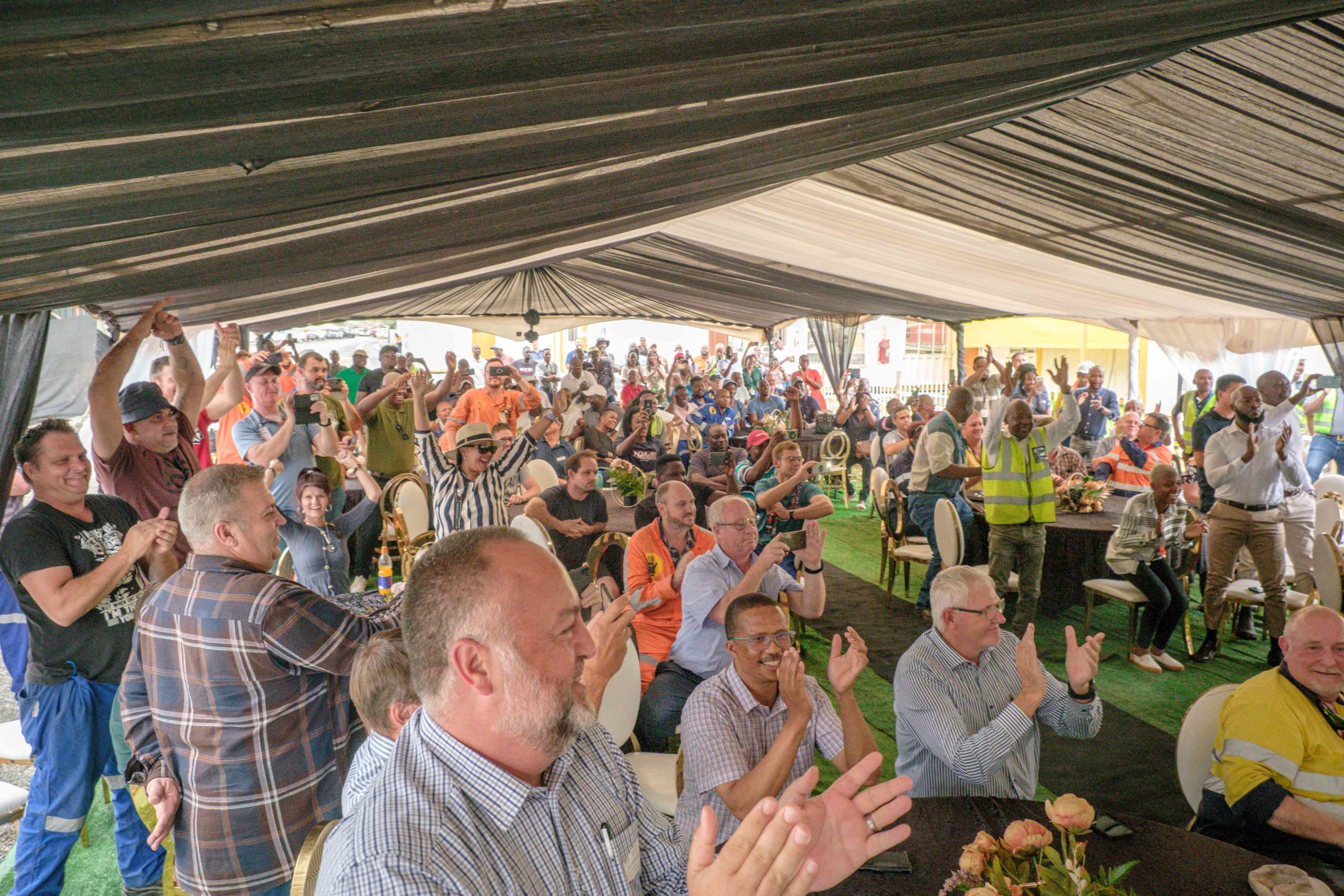Sign up for daily news updates from CleanTechnica on email. Or follow us on Google News!
The US solar industry is riding a wave of support from farmers, who are deploying new agrivoltaic technology to harvest solar energy while continuing to work their fields. The agrivoltaic movement is an important development in the renewable energy field because it pulls the rug out from under critics, who argue that solar arrays are an inappropriate use of farmland. The only thing missing now is an aesthetic improvement, and the European research firm AgroSolar Europe has the solution.
Agrivoltaic Arrays & The Appropriate Use Of Farmland
Though solar opponents continue to argue against rural solar development, the agrivoltaic movement is making it more difficult to make a case against situating solar panels on farmland.
For those of you new to the topic, agrivoltaics is a developing discipline that leverages solar infrastructure for agriculture. Agrivoltaic arrays are matched with crops that do well in partial shade. In addition to improving yields and protecting sensitive crops from overheating, the shady micro-climate can also conserve water, prevent erosion, and improve soil health.
Agrivoltaic technology is a significant step up from the early days of large-scale solar development, when the preference was to cut costs by situating the solar panels close to the ground, on gravel beds or short turf grass. As the cost of solar equipment began to drop, developers began to explore a more expansive approach to ground treatments. Solar arrays began to host diverse habitats for pollinator-friendly plants to benefit crops in nearby fields. Solar arrays have also begun to host prairie restoration projects and other native species conservation projects.
With the cost of solar energy continuing to fall, solar developers have begun to invest in purpose-built agrivoltaic infrastructure, in which the solar panels are raised or configured to enable farming to continue within the array. So far much of the activity has involved livestock grazing, but technology improvements have begun to spark activity among food crop growers as well.
Among recent developments, the US Department of Agriculture is working with the solar industry to provide opportunities for new farmers to work the land within solar arrays, and Congress has introduced bipartisan legislation aimed at encouraging farmers to co-locate solar panels on their land. Researchers are also deploying agrivoltaics to help farmers develop new specialty crops.
Better, Beautiful, Bio-based Agrivoltaic Infrastructure
Of course, solar opponents are still free to argue against new rural solar arrays on aesthetic grounds, though that argument loses some weight in consideration of modern, industrialized agriculture operations where the land beneath the crops has already been clear-cut and blanketed by chemical-dependent monoculture practices along with massive silos, livestock barns, plastic baling, greenhouses, roads, and heavy machinery.
Still, there is always room for improvement in a new field like agrivoltaics, and that’s where AgroSolar Europe has spotted an opportunity. The German research and development firm has been working with the startup FibR GmbH, to develop eye-pleasing, bio-based structures that replace the metal racking systems used in conventional agrivoltaic arrays with components made of flax, hemp, and wood fiber, among other materials.
“Renewable raw materials from agriculture are the starting material for the systems; they are used in material-saving lightweight construction for the construction of the Agri-PV systems,” AgroSolar explains.
“The production, construction and operation of the system requires less energy and therefore has a lower environmental impact, and recycling after 30 years leads back into the natural cycle,” they add.
As an additional environmental benefit, the materials for the agrivoltaic system can be grown locally, helping to avoid carbon emissions related to manufacturing and transporting conventional components.
Though metal systems last longer, the 30-year lifecycle of the bio-based material is consistent with the typical lifespan of solar panels. The US Department of Energy estimates that solar panels typically last about 30-35 years, though some may continue working past that period.
The Advantage Of Lightweight, Bio-based Solar Racking Systems
AgroSolar’s bio-based solution appears delicate, but looks can be deceiving.
“Thanks to the new lightweight construction, the material is not only extremely strong, but also much lighter than the steel currently used. At the same time, 90% less material is used, which reduces the weight significantly,” AgroSolar explains.
The combination of light weight and strength enables the bio-based system to support solar panels over a wider range of ground, enabling tractors and other equipment to travel between the supporting pillars. AgroSolar also points out that the system is designed for a relatively simple installation process without the need for heavy construction cranes to do the lifting. In addition to saving on cost and labor, the simplified construction process also avoids compacting the soil.
AgroSolar also anticipates that the aesthetic effect will ripple onto other inhabitants of the natural world. “Since the organic lightweight construction has tree-like structures, an increase in biodiversity in the area can be expected, as the spun flax structures provide ideal shelter for birds and insects and can be planted with climbing plants to blend even better into the surroundings,” AgroSolar explains.
 Chip in a few dollars a month to help support independent cleantech coverage that helps to accelerate the cleantech revolution!
Chip in a few dollars a month to help support independent cleantech coverage that helps to accelerate the cleantech revolution!
Another Agrivoltaic Twist: Solar Power & Agricultural Robots
For now, AgroSolar is focused like a laser on agrivoltaic markets in Germany and Europe, where it expects to begin delivering kits in 2026.
It remains to be seen if bio-based agrivoltaic systems make it over here to the US, but another solar-related element of AgroSolar’s work is already beginning to appear, in the form of solar-powered agricultural robots.
Last November, CleanTechnica took a look at one such solar-powered agri-robotics firm, the Washington State startup Aigen, which has developed a weeding system that replaces chemical treatments.
Another interesting example of US innovation in the solar-powered agri-robotics field is an autonomous, solar-powered “agricultural rover” developed by the startup Mineral through the X technology incubator (note: this particular X comes under the Alphabet/Google umbrella and has nothing to do with the social media platform formerly known as Twitter).
Though the rover is solar-powered, the main focus was on developing a new crop imaging system.
“Our project started with the insight that in order to grow food sustainably on a global scale, new tools will be needed to manage the staggering complexity of farming,” explained Mineral founder and CEO Elliot Grant, in a blog post back in 2020. “Over the last few years my team and I have been developing the tools of what we call computational agriculture, in which farmers, breeders, agronomists, and scientists will lean on new types of hardware, software, and sensors to collect and analyze information about the complexity of the plant world.”
Mineral has since graduated from X to formulate as an independent company. In a blog post earlier this month, Grant also described the advantages of deploying fleets of relatively small lightweight solar-powered agri-robots rather than relying on the gigantic farm machinery of today.
Follow me @tinamcasey on Bluesky, Threads, Post, and LinkedIn.
Image: A new agrivoltaic system deploys on bio-based components to raise solar panels above crops (courtesy of AgroSolar Europe).
Have a tip for CleanTechnica? Want to advertise? Want to suggest a guest for our CleanTech Talk podcast? Contact us here.
Latest CleanTechnica TV Video
CleanTechnica uses affiliate links. See our policy here.





